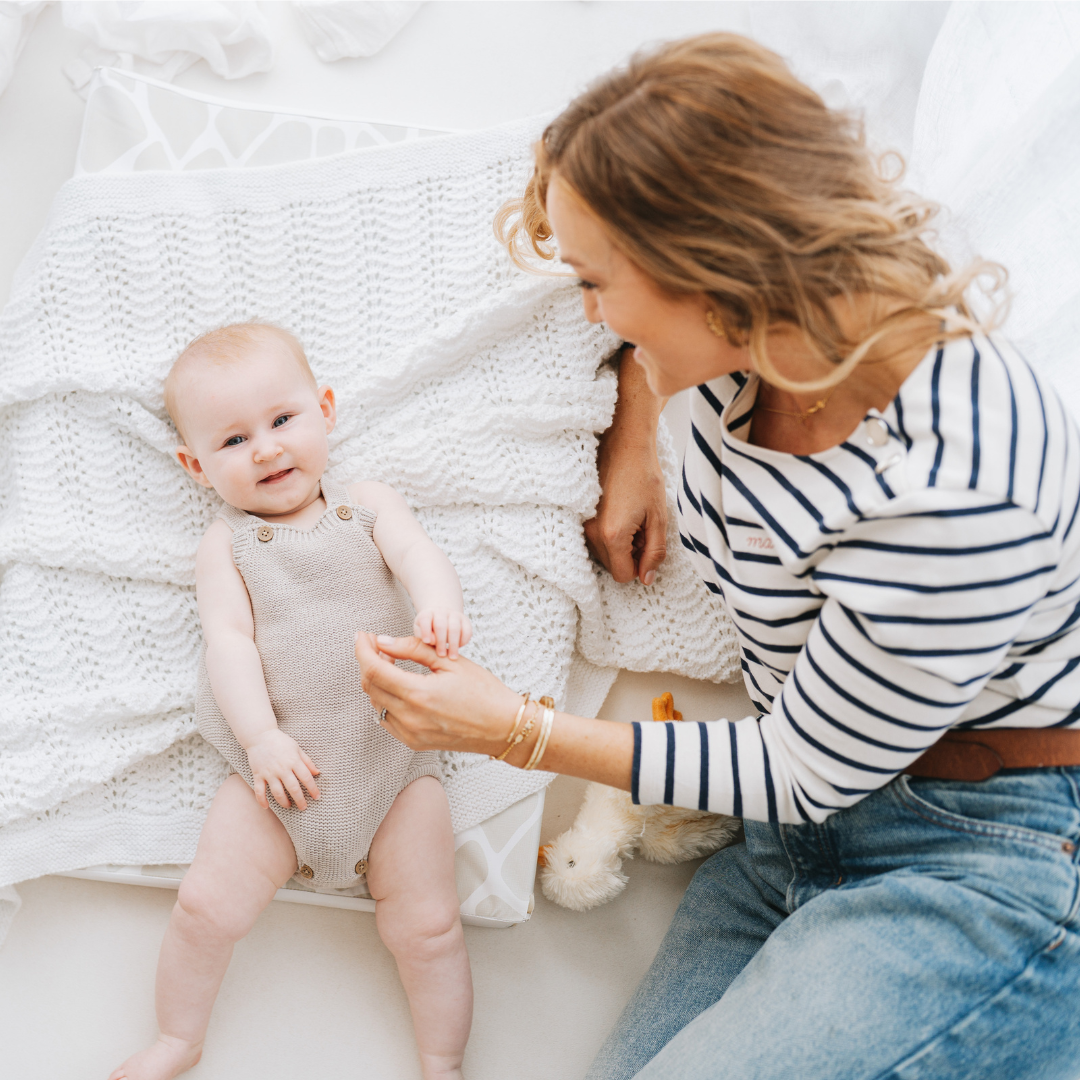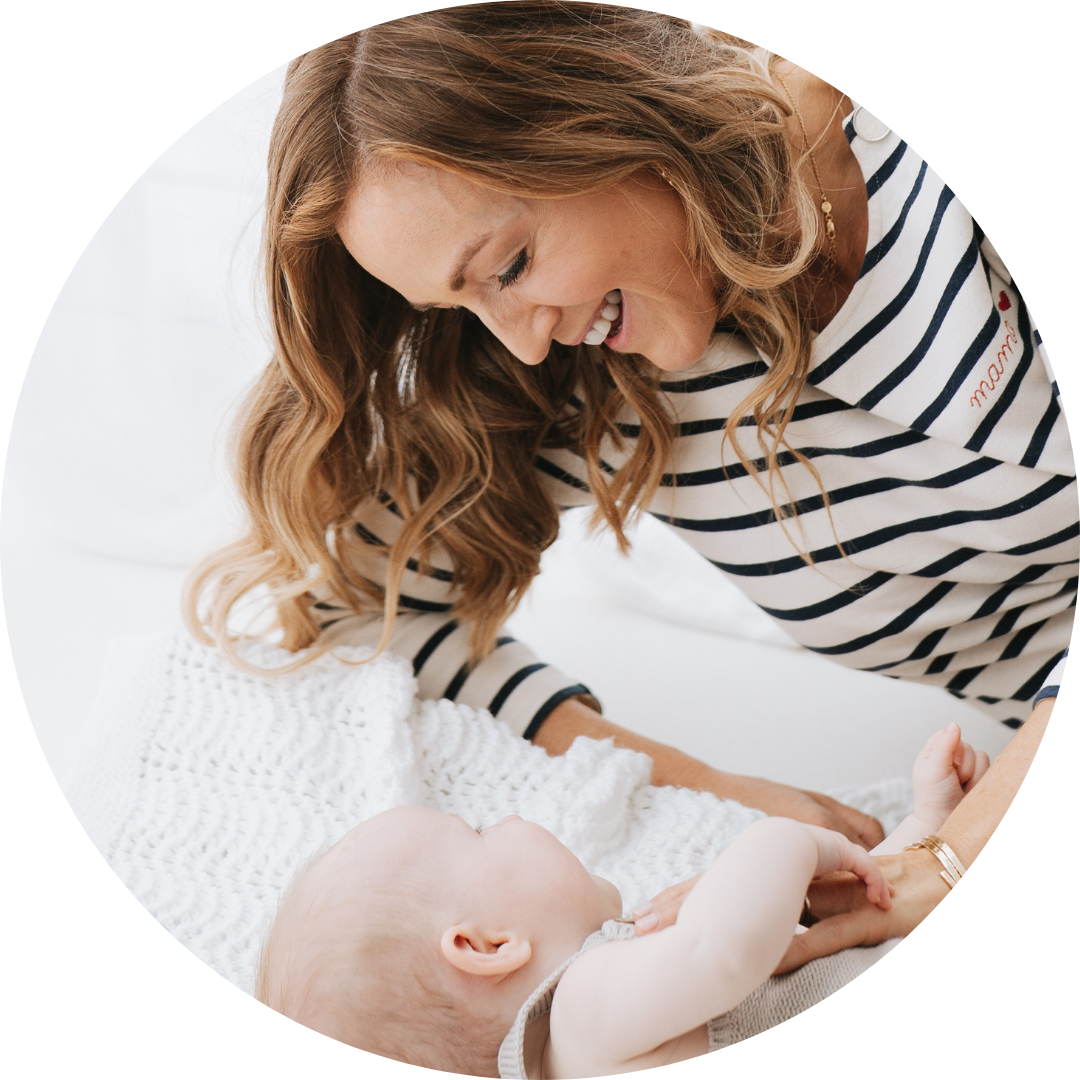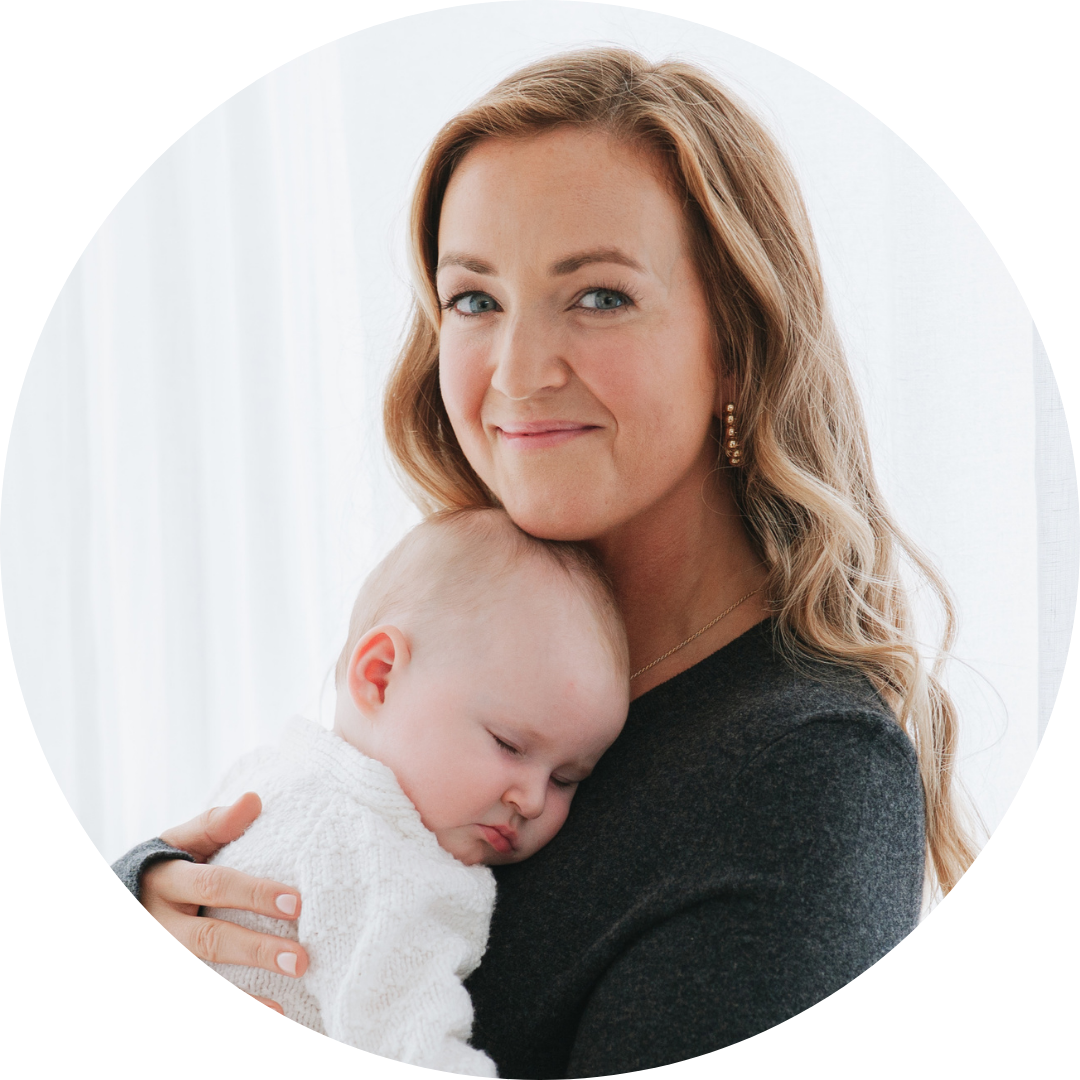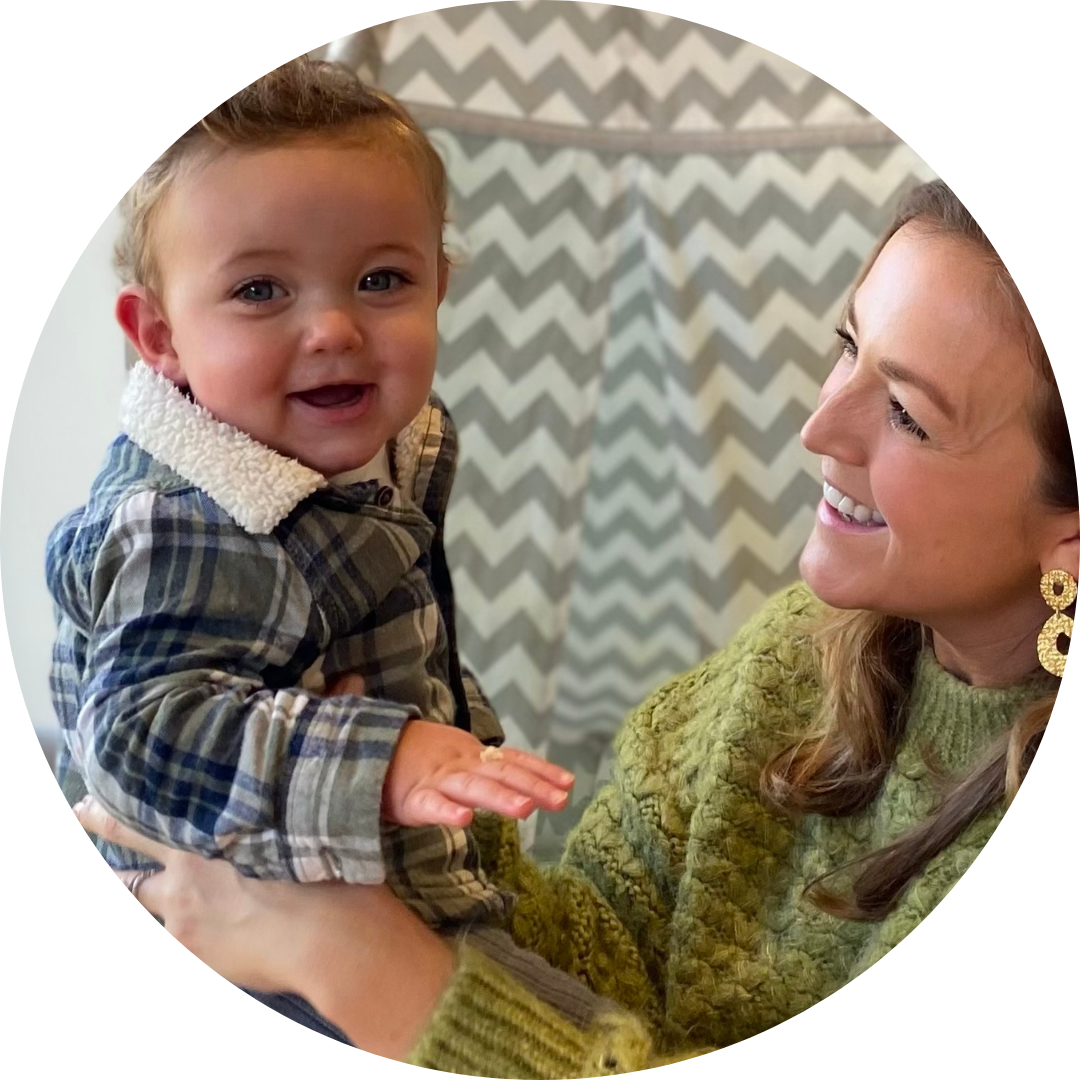Are you finding yourself stuck in a cycle of rocking or feeding your baby to sleep every night? Do you dream of putting your little one down in their crib awake and having them drift off to sleep independently? You're not alone! This is one of the most common challenges parents face, and it's also one of the most transformative sleep skills you can teach your baby.
Are you ready, ready?
Sleep training doesn't take too long generally, but it can be a few tough days when you're introducing change to your little one's sleep. Your baby is used to being rocked or fed to sleep, and we're getting them used to falling asleep independently instead. One of the biggest keys to success with this is you, as the parents or caregivers, feeling properly ready for a few tough days where there will or might be some crying.
Before beginning, ask yourself these questions:
• Do you have a few days at home with minimal commitments where you can focus on this transition?
• Are both parents or caregivers on the same page about the approach?
• Is your baby generally healthy (not teething, no colds or reflux issues)?
If you've answered yes to these questions, you're in a good position to start!
Pro Tip: Creating the optimal sleep environment is crucial for success; check this out on our blog here.
Understanding sleep associations
A sleep association is something that helps your baby fall asleep or get back to sleep. If every time they fall asleep it's by feeding or rocking, for example, then each time they wake during the night, they'll use that same method to return to sleep (whether it's actual hunger or not). This is simply how your baby knows how to fall asleep.
Common sleep associations include:
• Being rocked
• Being fed (breast or bottle)
• Using a dummy/pacifier
• Motion (pram, car, baby carrier)
• Using a bouncer or rocker
These sleep associations aren't "wrong," especially in the early days and weeks. However, for your baby to sleep well long-term, introducing them to being put down in their crib or cot awake and giving them the opportunity to fall asleep independently is invaluable.
Expert guidance for sleep transitions
While this blog provides a helpful overview, navigating sleep transitions can sometimes require personalized support. Our sleep guides offer step-by-step guidance tailored to your baby's age, while our 1-1 consultations provide customized solutions for your specific situation.
Pro Tip: Our sleep guides include detailed instructions for age-appropriate settling methods that gently guide your baby toward independent sleep. Check out our range of guides for every age from birth to years.
Is your little one in a routine?
To have success, it's essential to know that we're getting timings right and actually putting our babies down at a time when they are tired and ready to sleep. Whether you prefer a routine with set timings (all of our sleep programmes have routines with set timings) or going by awake windows and watching sleepy cues, this is step one.
Without the right routine in place, your baby may be under-tired (and therefore not ready to sleep) or over-tired (and therefore too wired to settle easily). Both scenarios make teaching independent sleep much harder!
Creating a calming wind-down routine
As babies get older and their play becomes more active, a 5-10 minute wind-down taking them from "play mode" to "sleepy mode" works well. Read a short story with your little one on your lap, which will give similar feelings of calm and closeness that doing a milk feed or rocking does, followed by cuddles and kisses – but no rocking!
A consistent bedtime routine signals to your baby that sleep is coming. Your routine might include:
• A warm bath
• Changing into sleep clothes
• A feed (ending 20-30 minutes before being put down)
• A short story
• Cuddles and kisses
• A lullaby as you put them in their sleeping bag
The key is consistency – doing the same things in the same order each night helps your baby understand what's coming next. Check out our blog ‘The final hour before bedtime’ here.
Optimizing the sleep environment
Creating a calm, safe space that your baby associates with sleep is essential for good long-term sleep. The following factors are important to get right in your little one's sleep environment:
• Darkness: The darker the room, the better, particularly for early risers. A well-fitted blackout blind or curtains are ideal.
• Temperature: Aim for a room temperature of 16-20°C (61-68°F).
• Clear crib/cot: Keep their sleep space clear, with no loose pillows, bedding, or toys.
• White noise: Many babies sleep better with white noise, as they're used to the noisy environment of the womb.
• Sleeping bag: Use a sleeping bag consistently for daytime and night time sleep.
• No distractions: Remove mobiles, light machines, or anything else that might stimulate your baby.
Pro Tip: A red or amber-based night light is best for not disrupting sleep if you need some light in the room. Our Amazon Storefront lists all of our recommended products for the perfect sleep environment.
The perfect put-down technique
Have the sleeping bag laid out in the cot and sing a lullaby to them as you put them down into the cot and zip them into their sleeping bag. The same lullaby every time you put your baby down is a great final cue for your little one that it is time to sleep for naps and at night. Say "goodnight" and turn any lights off, and switch white noise on if you're using.
There is a mindset shift involved in terms of getting used to seeing your little one fully awake in their cot spending some time getting themselves sleepy, rather than you doing that bit for them. Around 15-20 minutes from when you put your little one down and say goodnight to when they are actually asleep is totally normal.
Choosing the right settling method for your baby
When it comes to settling methods, there's no one-size-fits-all approach. The best method for your baby depends on their age, temperament, and what you as parents feel comfortable with.
Our sleep guides outline two effective settling methods in detail, with step-by-step instructions. Whether you prefer to stay in the room with your baby or give them a bit more space, we'll guide you through the process.
Give them a minute
When starting to teach your baby how to settle themselves, simply giving them a bit of time when they start to make noise during the night or during a nap can make all the difference. Often we can leap to babies' aid prematurely when they may actually be simply coming in and out of a sleep cycle and, if given the opportunity, may just settle themselves back to sleep.
There are a lot of things babies do when settling themselves or transitioning between sleep cycles that can make a bit of noise and disturbance, things like:
• Murmuring
• Fussing
• Chatting
• Rustling
• Snuffling
• Banging their legs onto the cot mattress
• Moving their head from side to side repeatedly
All of these are things they might do while not even being awake, so by coming in too soon, we also run the risk of waking them up fully. If they are not crying, try to just stay back and simply give them space to see if they will go back off to sleep by themselves.
Dealing with pacifier dependency
When the dummy/pacifier has started to become a problem (i.e., parents are having to pop it back in multiple times during the night or nap), we have the rule that "once it's out, it's out."
Keep it for the initial falling asleep, but once it's out, don't replace it. Instead, use a consistent settling method to help your baby learn to settle back to sleep.
The "baby only sleeps on me" solution
Many parents find themselves in this situation, especially in the early weeks. This can be due to issues like reflux where your baby is less physically comfortable in a lying down position, but often it's that they are just not "used to" being in their crib or sleep space.
Babies get used to what they are introduced to, so a good approach is to simply keep introducing them to being in their crib, little by little, and comforting them while they are lying in their crib. Start with short periods and gradually increase the time, always seeing it as practice rather than expecting immediate success.
When to feed vs. when to settle
Knowing when to feed your baby at night versus when to try to settle them can be tricky. A good rule of thumb is to look at how long your baby is generally going between feeds during the day.
If they're managing 3-4 hour stretches between feeds during the day but waking every hour for a feed at night, then you could try to re-settle your baby using a different method if they wake sooner than 3 hours, as it's less likely to be hunger.
Remember: if it's hunger – they WON'T re-settle!
Pro Tip: Our 'Reducing night feeds' guide gives you our Four Step Framework to reducing night feeds & achieving longer stretches of sleep.
Common challenges and expert solutions
Moving away from rocking or feeding to sleep often comes with challenges. Here are some common issues:
Setbacks during illness or teething
It's completely normal and appropriate to be more responsive and offer extra comfort during these times. Pause sleep training efforts and return to them when your baby is feeling better.
Early morning wakes
If your baby is waking before 6am, it could be related to over or under tiredness from the previous day. Ensure your baby is getting the right amount of daytime sleep.
Nap refusal
Sometimes babies will refuse to nap independently before they accept independent sleep at bedtime. Remember that getting daytime sleep (even if it's in a carrier or pram) is more important than where they sleep during this transition.
Get personalized support
While this guide provides a helpful overview, every baby is unique. For personalized guidance tailored to your specific situation, consider:
• Our comprehensive sleep guides - Age-specific guides with step-by-step instructions for teaching independent sleep
• 1-1 consultations - Personalized support from our expert sleep consultants
• Troubleshoot calls - Quick problem-solving sessions for specific sleep challenges for families who have purchased a sleep guide or consultation.
So are you ready to move away from rocking to sleep?
Teaching your baby to fall asleep independently is one of the most valuable skills you can help them develop. Not only does it lead to better sleep for your little one, but it also gives you back some precious time in the evenings and helps everyone in the family get the rest they need.
Remember, this transition isn't about abandoning or ignoring your baby – it's about giving them the opportunity to learn a vital life skill. You are still there, providing reassurance and support throughout the process.
Be patient with yourself and your baby during this transition. Some days will be easier than others, but with consistency and love, you'll both get there. The freedom and confidence that comes with your baby being able to fall asleep independently is truly worth the effort.
Ready to transform your family's sleep?
Need a blueprint to follow?
Our Sleep Guides give you a step-by-step plan to follow to help your little one to become a great sleeper.









